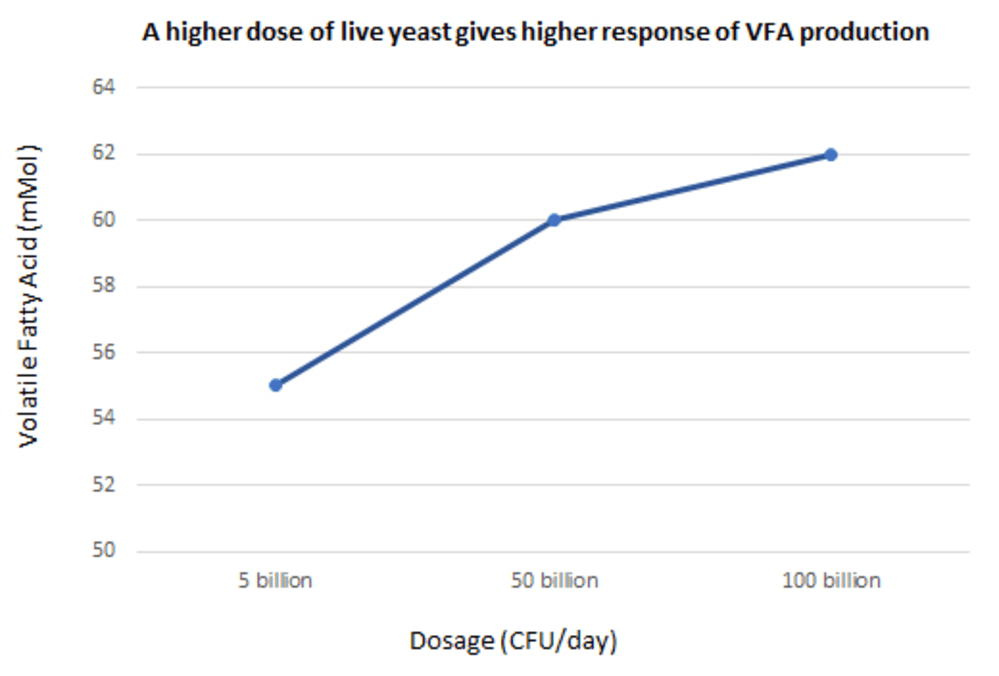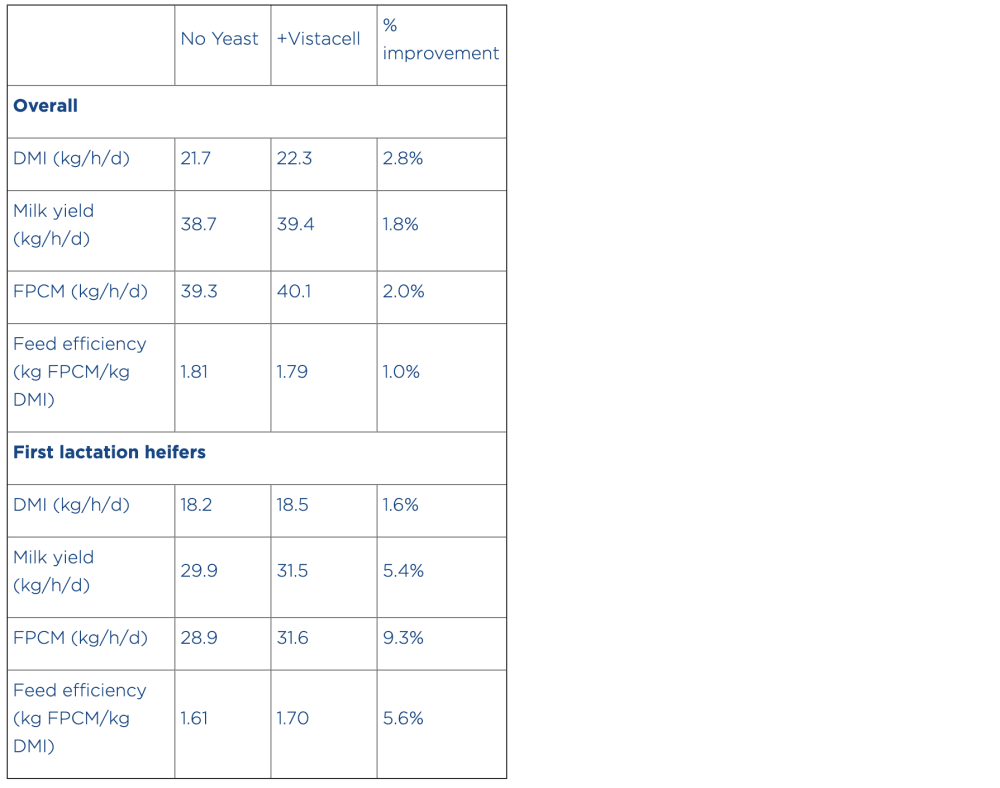Improving on farm profitability through maximising rumen efficiency
Published Tuesday, 11th August 2020The progression of ruminant nutrition along with new insights into the rumen microbiome has led to the advancement in targeted feed ingredients to optimise rumen health.
“The benefits of maintaining a healthy rumen environment are numerous in terms of animal health and production,” explains Kayley Barnes, AB Vista’s Ruminant Technical Manager. “Optimising the function of the rumen should be the starting point for any drive to improve milk output, milk value or feed efficiency.”
As the industry’s understanding of the rumen environment improves, so too does our knowledge of how to overcome frequently seen challenges. For example, it is known that the efficiency of the rumen to utilise feedstuffs can be impaired by the presence of oxygen, pH changes and changes to the rumen microbiome. This knowledge allows producers the opportunity to include rumen beneficial feed additives, such as Vistacell live yeast, to increase rumen efficiency and overall herd profitability.
Vistacell – mode of action:
The addition of a live yeast such as Vistacell to the ration helps to promote a more stable rumen pH and can improve fibre digestion due to its enhanced mode of action when compared to non-live yeast products. It’s the combination of these mechanisms working together that make a metabolically active yeast like Vistacell so consistently effective:
- Scavenging oxygen
Even trace quantities of oxygen will reduce rumen activity and have an impact on the populations of beneficial anaerobic fibre digesting microbes in the rumen. Oxygen enters the rumen daily via rumination, eating, drinking and through the blood supply across the rumen wall, so its utilisation by Vistacell is critical for good fibre digestion. - Competition for sugars
By using up any excess sugars within the rumen as a food source, Vistacell helps to limit the risk that this sugar will be converted to lactic acid. The strongest acid produced in the rumen, lactic acid quickly reduces rumen pH, increasing the risk of sub-acute ruminal acidosis (SARA) which leads to reduced performance. - Stimulate lactic acid utilising organisms
Vistacell further reduces lactic acid build-up by stimulating microbes capable of converting lactic acid into propionate, a key volatile fatty acid (VFA) absorbed from the rumen to supply energy to the cow.
Improved rumen microbial diversity
Certain metabolites from Vistacell directly boost growth of beneficial microbes, as well as anaerobic fungi that ‘open up’ forage fibre for bacterial digestion. This increases microbial numbers and diversity, shortening the lag time before fibre digestion begins.
Differentiating live yeasts
The difficulty on farm is knowing which available live yeast will provide the greatest benefit. There are several things to consider when choosing a live yeast.
“The size of the live yeast cells, the colony forming unit (CFU) count and the live yeast survivability in the rumen all vary between live yeast strains,” adds Ms Barnes. “Knowing what is important is key in choosing the most effective live yeast to maximise returns.”
The CFU count per gram of live yeast is, in basic terms, the yeast’s activity level, therefore the higher the CFU count the greater the activity (Figure 1). Higher CFU counts allow live yeasts the greatest opportunity to improve and optimise the rumen environment.
Figure 1
“With live yeast strains ranging from 10 to 60 billion CFU per gram, it is crucial to consider the CFU number when making decisions on live yeast inclusion,” explains Ms Barnes. “In addition, the physical form of the live yeast also has a big impact on it’s effectiveness within the rumen.”
Vistacell’s robust spherical form enables the delivery of a higher CFU/gram, increasing its oxygen scavenging ability in the rumen whilst also optimising viability pre-consumption, when compared to the traditional noodle form. This is supported by a meta-analysis completed by Desnoyers et al (2009).
Supported by Research:
A trial carried out at the Schothorst Research Centre, shows how Vistacell can be used to improve milk yield, milk components and help support body condition during that critical period in early lactation. The Dutch trial monitored 60 dairy cows (including 22 heifers) receiving either 4g/head/day of a metabolically active live yeast (Vistacell) compared to no yeast in the ration over a 10-week period. All cows were fed a non-acidotic mixed ration and were milked twice daily. Milk yield was recorded at each milking and milk composition was measured 4 times weekly, dry matter intake (DMI) and bodyweight were recorded daily. The results are shown in Table 1, with it being clear that Vistacell improved DMI, milk yield and fat-protein corrected milk (FPCM).
Table 1
Overall, supplementation with Vistacell led to an improvement (0.7 kg/d) in milk yield and milk components. As a consequence, FPCM also tended to improve (0.8 kg/d) and DMI showed an increase of 0.6 kg/d upon yeast supplementation.
“The greatest feed efficiency improvements were seen in first lactation heifers, with a lift of 5.6% (1.7 vs 1.61), which is important to promote further frame growth when competing for feed space in a mature herd,” adds Ms Barnes.
“Additionally, multiparous cows gained weight more quickly after calving when Vistacell was fed. Showing that Vistacell supplementation better equips cows to manage the energy deficit through improved feed efficiency and DMI,” concludes Ms Barnes.
Overall, the addition of a live yeast can really benefit herd health through improved rumen function and better feed efficiency which will ultimately help to boost profitability.
Latest news
Stay ahead with the latest news, ideas and events.

Online Feed Fibre Calculator
Calculate the percentage of dietary fibre in your feed
Our calculator is designed for nutritionists and uses averages of global raw materials to calculate the dietary fibre content (plus other more in-depth fibre parameters) of finished animal feed. These parameters are available within AB Vista’s Dietary Fibre analysis service (part of our NIR service).
Sign up for AB Vista news
A regular summary of our key stories sent straight to your inbox.
SUBSCRIBE© AB Vista. All rights reserved 2025
Website T&Cs Privacy & Cookie Policy Terms & Conditions of Sale University IDC policy Speak Up Policy



























